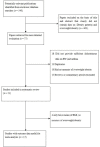Dietary Patterns and Overweight/Obesity: A Review Article
- PMID: 28845396
- PMCID: PMC5563867
Dietary Patterns and Overweight/Obesity: A Review Article
Abstract
Background: Dietary patterns analysis may provide insights into the influence of overall diet on overweight/obesity. In the past two decades, the relation between dietary patterns and overweight/obesity has been a research focus and a number of results were reported in the research field.
Methods: An electronic literature search was conducted in PubMed and Web of Science, to identify human studies published by Mar 2015 and written in English. The following keywords or phrases were involved: dietary patterns, dietary pattern, factor analysis, principal component analysis, diet, obesity, adiposity, overweight and BMI. All the studies were retrieved and prudent/healthy (n=17) and western/unhealthy (n=18) dietary patterns were identified.
Results: When compared with the lowest categories of a prudent/healthy dietary pattern, a reduced overweight/obesity risk was shown in the highest (OR=0.64; 95% CI: 0.52, 0.78; P<0.0001). While there was an increased overweight/obesity risk in the highest when compared with the lowest categories of a western/unhealthy dietary pattern (OR=1.65; 95% CI: 1.45, 1.87; P<0.0001).
Conclusion: A prudent/healthy dietary pattern and limit intake of western/unhealthy dietary pattern should be followed, which helps to keep a healthy body mass.
Keywords: BMI; Dietary patterns; Meta-analysis; Obesity; Overweight.
Conflict of interest statement
Conflict of Interests The authors declare that there is no conflict of interest.
Figures



References
-
- World Health Organization (2000). Obesity: Preventing and Managing the Global Epidemic. World Health Organ Tech Rep Ser, 894:i–xii, 1–253. - PubMed
-
- Cornier MA, Marshall JA, Hill JO, et al. (2011). Prevention of as overweight/obesity a strategy to optimize cardiovascular health. Circulation, 124: 840–50. - PubMed
-
- Hamer M, Brunner EJ, Bell J, et al. (2013). Physical activity patterns over 10 waist circumference: the Whitehall II and body mass index years in relation to cohort study. Obesity (Silver Spring), 21: E755–61. - PubMed
-
- Osler M, Helms Andreasen A, Heitmann B, et al. (2002). Food intake patterns and risk of coronary heart disease: a prospective cohort study examining the use of traditional scoring techniques. Eur J Clin Nutr, 56:568–74. - PubMed
Publication types
LinkOut - more resources
Full Text Sources
Other Literature Sources
Miscellaneous
